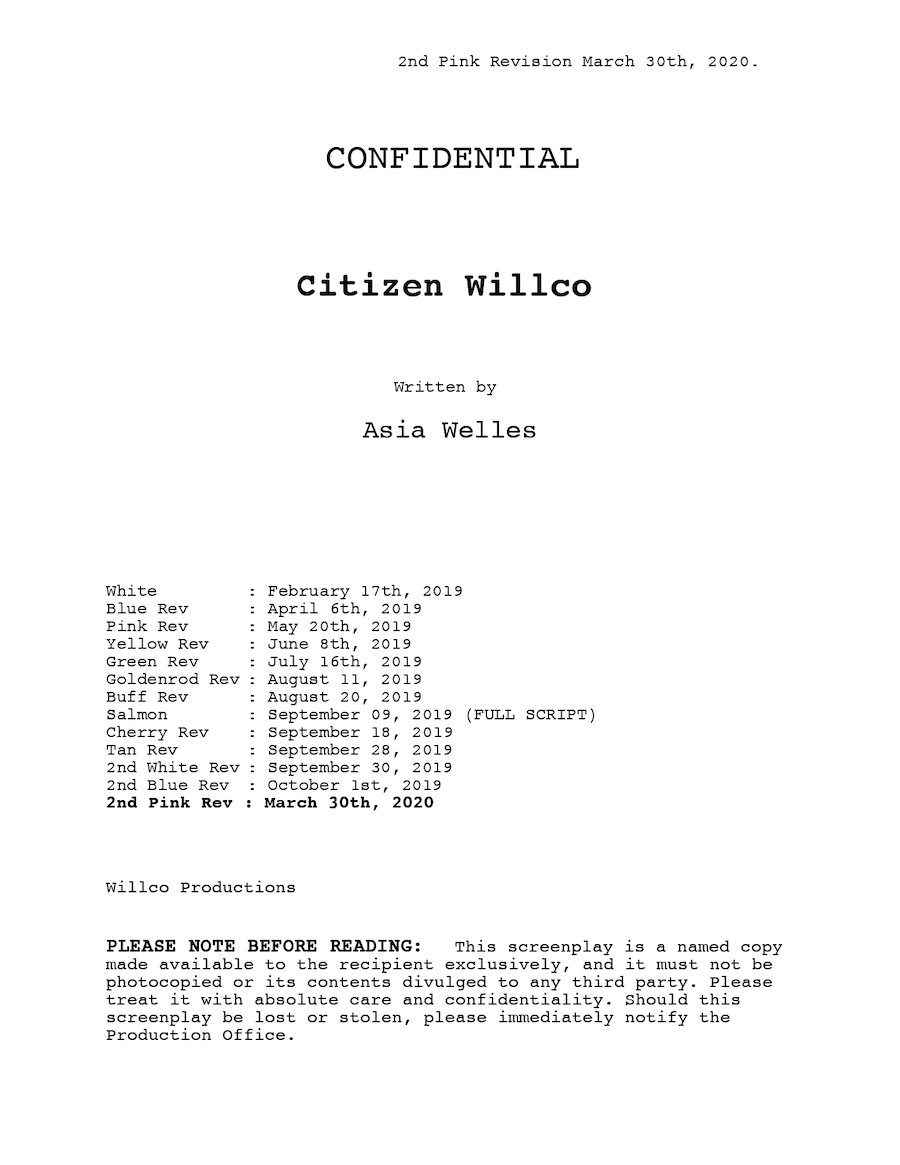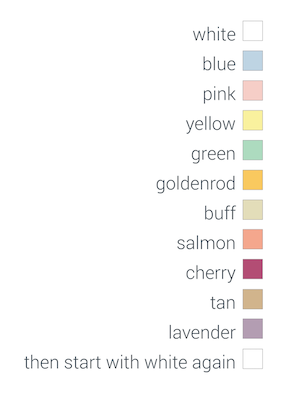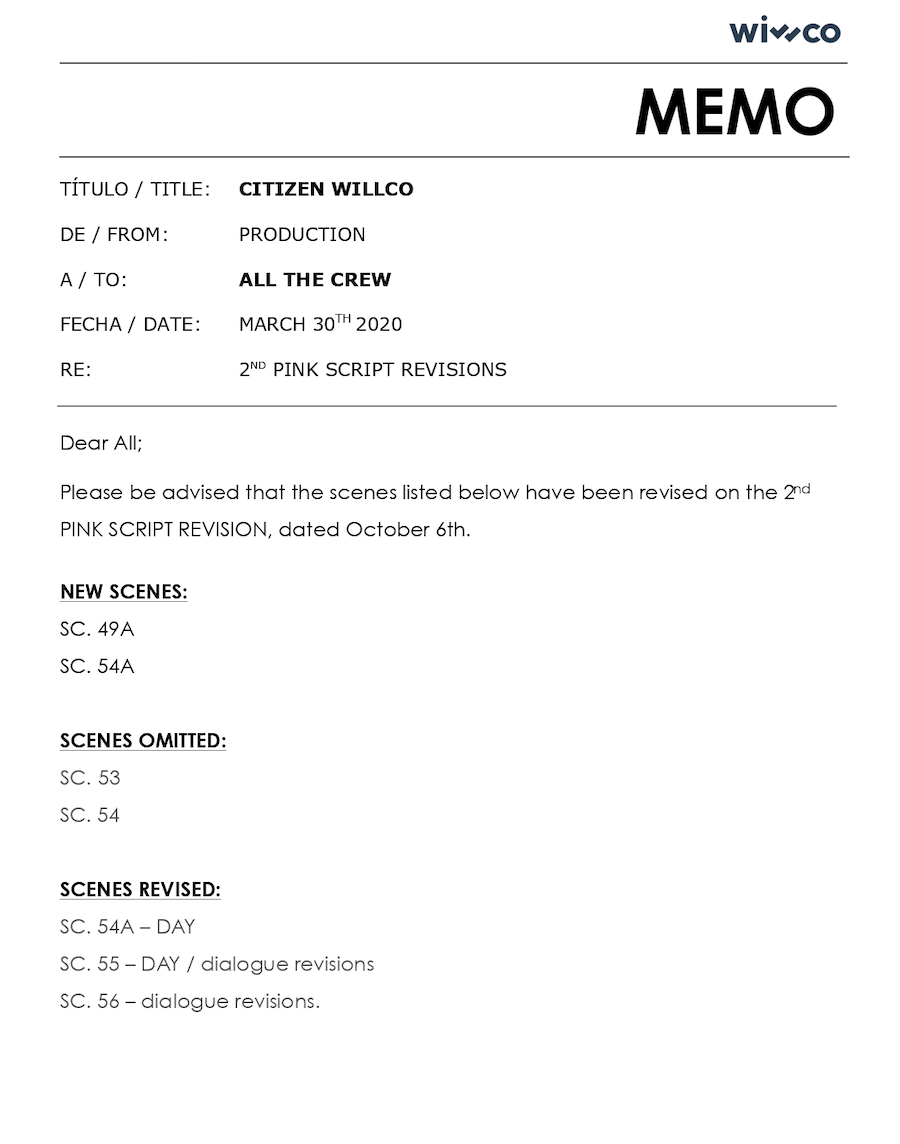The script or how the story begins
The very beginning
As you can imagine, usually, this is how the production process starts. First, the script, then a preliminary schedule, breakdown, budget and finally, months or even years of intense and expensive adventure. Hundreds of hard-working people are involved in this process and it’s really difficult to overvalue the importance of the script and how it is dealt with during all the production stages.
That is why here I’d like to give you some script-related basics from the Production Coordinator’s point of view:
Script elements
Above all, a script is not a novel.
Screenwriting must follow standard guidelines to keep the reader focused and to allow an easy breakdown of the shooting necessities.
These are the basic elements of any screenplay:
Scene Heading: Every scene begins with a heading to describe any change of location or time in the screenplay, these will usually be: INT. / EXT. - SET - DAY / NIGHT; format: uppercase
Action: Description of anything that can be seen or heard; format: regular text.
Character: The name of the character speaking, bear in mind that a character who is off screen or speaking in voiceover should be designated by O.S. or V.O. respectively; format: own line and uppercase
Parenthetical: Tone description to provide context or instruction for the dialogue; format: wrapped in parentheses.
Dialogue: Pretty straight forward, just as it sounds, the dialogues. format: centered on the page.
Transition: Edition elements to move from one scene to the next one, like: CUT TO, FADE IN/OUT, INTERCUT, DISSOLVE TO, WASH OUT, MORPH

Screenplay elements
Screenplay format
As all the cast and crew will organise and schedule they work according to the script, it must follow very strict formatting rules:
-
Font: the standard font here is 12 pt Courier.
-
Uniform-sized pages: this standardized font size allows to estimate the length of the film, based on the calculus that approximately each script page becomes 1 minute of film. Thus, a screenplay for a 100 to 120-minute long film will have between 90 and 120 pages, bearing in mind that heavy action usually takes a little more time and dialogue a little less.
-
Scenes and page numbers: although the script will change frequently during production, once it’s locked and handed out to the departments, the Scene and Page numbers will never change. So, when new material is added, a letter will be added to the previous page or scene number (such as scene 2A, or page 110A etc.), to keep the original numbering unchanged. When the script is reduced, the scenes and pages will remain in the screenplay with the word “omitted”.
-
Measurement unit: the minimum unit of script measurement is ⅛ of a page. This is because of the screenplay formatting, which has roughly eight inches of text on each page. Thus, the minimum length of a scene is ⅛ page.
-
Title page: the title page includes information on the writers, the title, may also mention the production companies. The front page must identify clearly the version of the recent script and its issuing date. The confidentiality disclaimer should be placed at the bottom of the front page. All previous script revisions will be mentioned on the title page, which will look something like this

Title page of a script with several revisions.
Script revisions
The script usually changes quite a bit during production, turning into a multicolour book by the end of shooting. All the changed, new and omitted scenes will be published as script revisions, following the rules below:
-
Distribution: revisions will be distributed to the crew, either included into the complete script or by handing out just the revised pages, both in hard copies and digitally.
-
Identification: all script revisions must be indicated very clearly to the departments:
- Revisions are marked on the right side of the page with an asterisk (*).
- As we already mentioned, all revisions are listed on the title page as well.
- The header of the page indicates the version (with a specific color) and the issuing date of the revision.
- Revised pages are usually distributed on colour pages: colour paper is used to visually identify all revised script pages. Here’s the typical colour sequence:

Script changes colour code
- Memo: a script revisions memorandum will be distributed, highlighting all the changes, the new and omitted scenes.

Example of a script revisions memorandum
Copying and distribution
Despite the digital revolution, the majority of productions are still dependent on paper for scripts and other documents. The truth is that the impact of paper consumption is huge, so mitigating paper use is a critical part of reducing deforestation. Additionally, using digital tools can improve communication efficiency and security. Although it is vital for certain crew members and actors to have at least one hard copy of the script, I’d like to encourage you to make some efforts to reduce the use of paper.
-
One or double-sided printing: caring people may try to print double-sided scripts to save trees, but these are a bit harder to work with for some crew members. More importantly, the pages with revised scenes cannot be replaced, so I would not recommend it as a general rule but it definitely would be a good idea in certain occasions (i.e: printing a script for a Location’s owner).
-
Watermarking: for confidentiality reasons, the script should be individually watermarked with each cast or crew member’s name. Watermarking of PDFs is quite time consuming but there is some software that can do it automatically.
-
Binding: scripts are usually printed on American Letter or A4 format and binded with 2 or 3 hole binders, depending on the country. A5 size is very handy and it will substantially reduce the use of paper. Using ring binders or fasteners and not a spiral binding is vital, so pages with the revised scenes can be replaced easily.
-
Distribution: It is vital to have the script and its revisions distributed to all the cast and crew members involved. Do not forget the agents and managers, in many occasions you’ll be sending them the script instead of delivering it directly to the actors. Apart from the on-set crew members, always remember to send the script revisions to your casting director, catering company, visual and special effects companies, clearance agencies, etc.
-
Distribution lists: you should run a log for all the scripts and script revisions distributed, keeping record of the recipients, script versions and delivery dates.
-
Distribution software: nowadays you can automate script watermarking, printing and distribution using professional software, such as Scenechronize and Setkeeper.
-
Timing: getting the script or script revisions distributed on time is as important as not doing it too early. It is vital that the distributed script is fully approved and greenlighted.
Confidentiality
- NDA: a Non Disclosure Agreement will usually be handed over with a script to protect the confidentiality of the screenplay.
- Confidentiality disclaimer: some production companies require a confidentiality disclaimer at the bottom of the front page. It usually looks something like this:
This screenplay is a named copy made available to the recipient exclusively, and it must not be photocopied or its contents divulged to any third party. Please treat it with absolute care and confidentiality. Should this screenplay be lost or stolen, please immediately notify the Production Office.
Summing up, just make sure that you are extremely strict and consistent when dealing with the script and its revisions. Remember that everything you can do to keep your crew focused, improves your production and makes your team happier.
